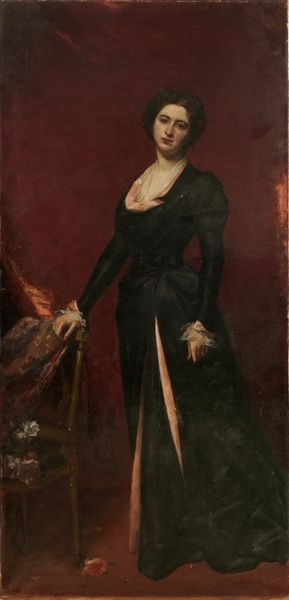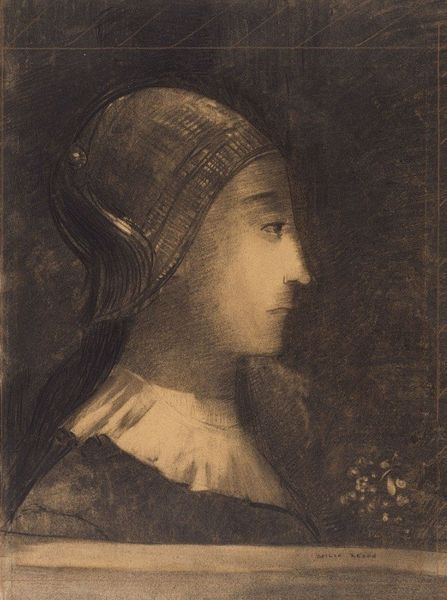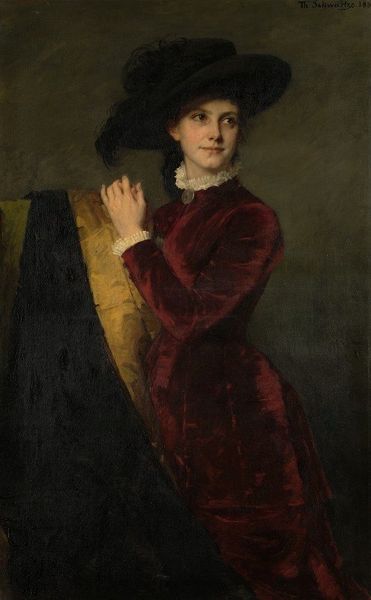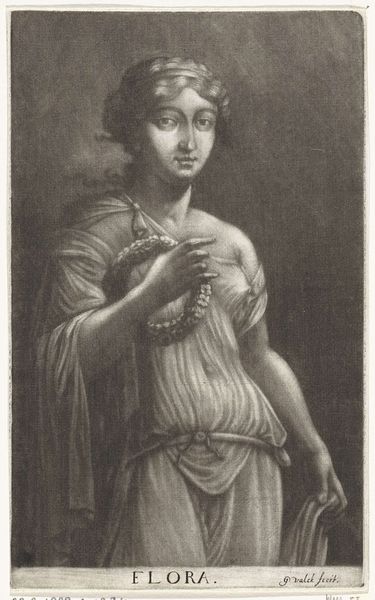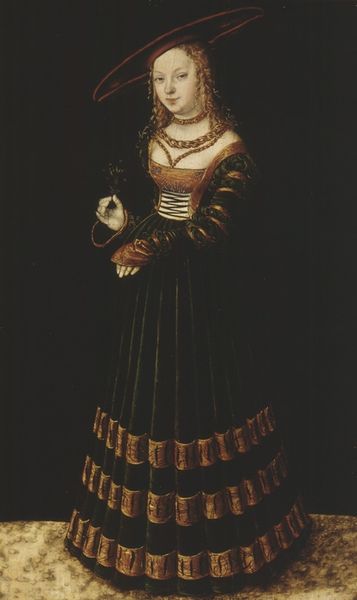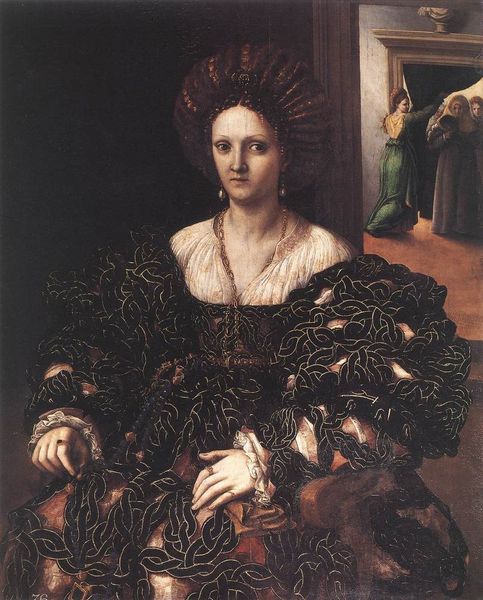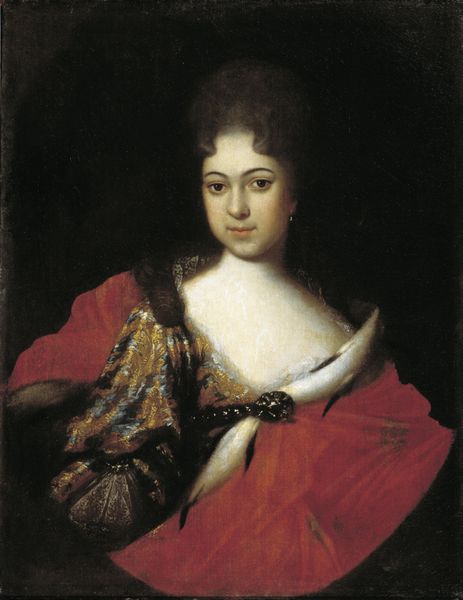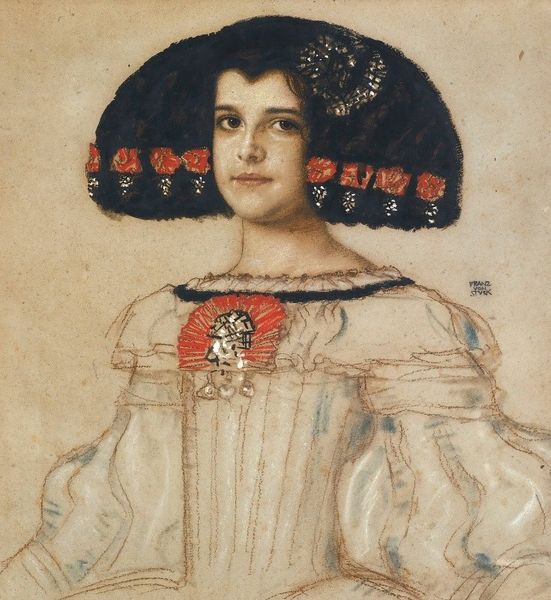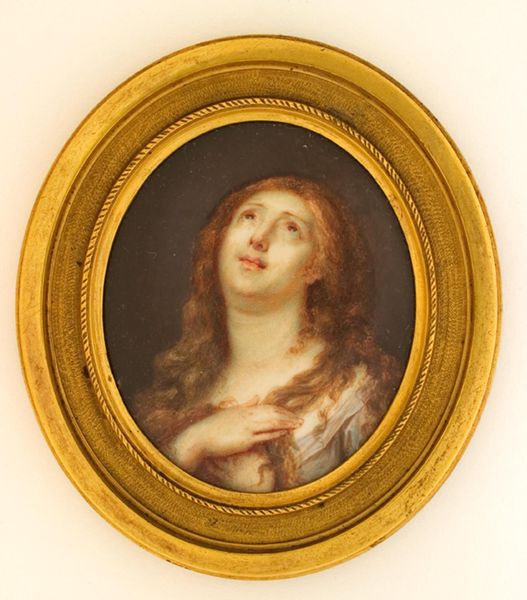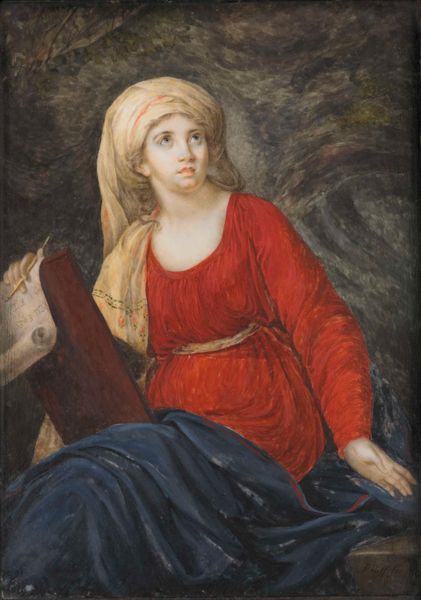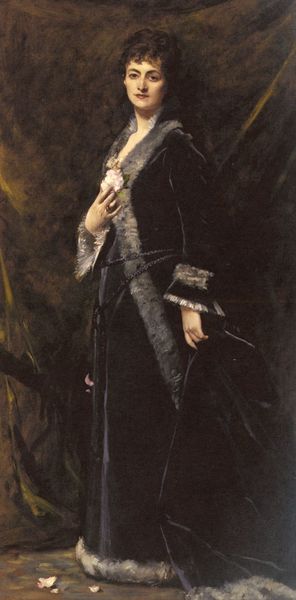
painting, oil-paint
#
portrait
#
art-nouveau
#
painting
#
oil-paint
#
figuration
#
symbolism
Copyright: Public domain
Editor: So here we have Rippl-Ronai's oil painting, "Zorka Bánzai in a Black Dress" from 1911. It has a sombre, almost melancholic feeling about it. What strikes you first when you look at it? Curator: Initially, I observe the composition. Note how the figure's black dress dominates the canvas, contrasted by the warm red of the armchair. Consider also the brushwork – short, broken strokes that articulate texture rather than attempting mimetic representation. Editor: It’s almost pointillist in a way, that brushstroke style. How does that texturality contribute to the piece? Curator: Precisely. The divided brushstrokes prevent any single area from dominating, forcing the eye to synthesize the image. The chromatic interplay of the black dress and red chair is activated further, isn't it? There’s a tension created, not a harmony, a push and pull that enlivens the portrait. What do you think about how she's holding part of her dress up? Editor: That gesture is very intriguing! It gives the portrait an unfinished quality; her posture appears both studied and spontaneous. Like she might let it drop any second. I see a painting interested in more than just surface. Curator: Yes, I agree. And how does this spontaneity disrupt conventions of the time? I'd wager it offers us insight into formal structures of painting that don't attempt to resolve, but agitate the pictorial frame, wouldn’t you say? Editor: I hadn't thought of it like that. It gives a certain agency to the subject, rather than her simply being depicted, as it feels very intimate. This analysis definitely gives me a new appreciation for the work’s subtleties and intentions. Curator: And I believe you’ve begun to consider how artistic style achieves these powerful affects through formal properties.
Comments
No comments
Be the first to comment and join the conversation on the ultimate creative platform.


